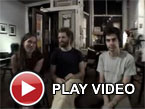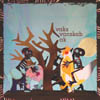 For the second Dekorder release, Denmark's Voks delivers a 3" thatlacks Un Caddie's adventurous sound-grabbing, but is no less colorful.With former releases including a spot on Goodiepal's V/VM 7" series,Voks makes intensely na?ve computer music, revealing an obsession fortoy instrument sounds and dawdling, childlike rhythms. These songs arenot playful in the punky, campy style of artists like DAT Politics orthe oddball fringe of the Sonig label; instead, Vaks Vanskab Akis more of a mood piece, despite its more flamboyant qualities. Tracksreject dominant melodic roles; rather, sounds scatter in loosecompliment of each other, haphazardly forming recognizable motifs, likethe loose Middle Eastern feel that invades songs like "Hottenslot" and"Tuuie." The disc acts like a scatterbrained attempt at scoring anabsurdist's animated short, full of swift mood swings but with enoughopen space to imply corresponding action or visual reference. Vaks Vanskab Akwould make a perfect backdrop for the bizarre puppet show pictured onits cover in which skeletal figures ride elephants and giant chickens,though I'd warn against extending its 20-min. length. Voks shows acharming command over his arsenal of tinkering toys and popping synthsounds, but a move to larger format will require a furtherconsolidating of ideas and perhaps some NyQuil for the manic innerchild who gets carried away ad nauseam on a few of these.
For the second Dekorder release, Denmark's Voks delivers a 3" thatlacks Un Caddie's adventurous sound-grabbing, but is no less colorful.With former releases including a spot on Goodiepal's V/VM 7" series,Voks makes intensely na?ve computer music, revealing an obsession fortoy instrument sounds and dawdling, childlike rhythms. These songs arenot playful in the punky, campy style of artists like DAT Politics orthe oddball fringe of the Sonig label; instead, Vaks Vanskab Akis more of a mood piece, despite its more flamboyant qualities. Tracksreject dominant melodic roles; rather, sounds scatter in loosecompliment of each other, haphazardly forming recognizable motifs, likethe loose Middle Eastern feel that invades songs like "Hottenslot" and"Tuuie." The disc acts like a scatterbrained attempt at scoring anabsurdist's animated short, full of swift mood swings but with enoughopen space to imply corresponding action or visual reference. Vaks Vanskab Akwould make a perfect backdrop for the bizarre puppet show pictured onits cover in which skeletal figures ride elephants and giant chickens,though I'd warn against extending its 20-min. length. Voks shows acharming command over his arsenal of tinkering toys and popping synthsounds, but a move to larger format will require a furtherconsolidating of ideas and perhaps some NyQuil for the manic innerchild who gets carried away ad nauseam on a few of these.
Two new shows just for you. We have squeezed out two extended release episodes for this weekend to get you through this week. They contain mostly new songs but there's also new issues from the vaults. The first show features music from Rider/Horse, Mint Field, Robert Aiki Aubrey Lowe, Anastasia Coope, ISAN, Stone Music, La Securite, Bark Psychosis, Jon Rose, Master Wilburn Burchette, Umberto, Wand, Tim Koh, Sun An, and Memory Drawings. The second episode has music by Laibach, Melt-Banana, Chuck Johnson, X, K. Yoshimatsu, Dorothy Carter, Pavel Milyakov, Violence Gratuite, Mark Templeton, Dummy, Endon, body / negative, Midwife, Alberto Boccardi, Divine. Cow in Maui from Veronika in Vienna. Get involved: subscribe, review, rate, share with your friends, send images! |



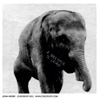 Dekorder 003 comes from John Hegre, a mainstay in both the pop andexperimental scenes in Norway as a member of established pop groupKaptein Kaliber and one half of the amazing electro-acoustic improv duoJazzkammer. The first full release under his own name, "A Nice Place ToLeave" is understandably more in line with his work with Jazzkammer, a3" disc consisting of three improv pieces produced with primitiveelectronics, guitar, computer, and what sound like obscured fieldrecordings. The songs are sparser than most Jazzkammer, but they avoida meditative end as all three seem to hinge on the element of surprisewith brutal, physical sounds consistently puncturing the atmosphericpassages. The first track builds on a looped guitar drone sounding likea gigantic bell pounded at low volume. To this repetitive sound, Hegreadds bits of static and synthetic sound, threatening a kind of rhythmicprogression, though the track never picks up, ending instead withpremature insistence as the electronic hums and pulses grow louder andmore prominent before throwing themselves into concentrated blasts ofnoise, terminating seconds before speakers are blown. The second trackis drone-heavy and uneventful until nuanced guitar noise, fallingthings, and what sound like birdcalls made by a modem begin to sectionoff the cold mass of sound, easing it into a crisp, grinding stop. Theclosing track picks up the looping guitar from the first, making clearthat A Nice Placeis really one long piece, bookended by these drones which could beeasily extended and remain interesting. Hegre keeps the noise largelyabsent from this final section as he does (relatively) for most of thedisc, making it less memorable than most of his other works, but noless captivating. His grasp on timing and successful juxtaposition isas apparent as ever, and I can only hope Dekorder has a full-length instore from this always-interesting artist.
Dekorder 003 comes from John Hegre, a mainstay in both the pop andexperimental scenes in Norway as a member of established pop groupKaptein Kaliber and one half of the amazing electro-acoustic improv duoJazzkammer. The first full release under his own name, "A Nice Place ToLeave" is understandably more in line with his work with Jazzkammer, a3" disc consisting of three improv pieces produced with primitiveelectronics, guitar, computer, and what sound like obscured fieldrecordings. The songs are sparser than most Jazzkammer, but they avoida meditative end as all three seem to hinge on the element of surprisewith brutal, physical sounds consistently puncturing the atmosphericpassages. The first track builds on a looped guitar drone sounding likea gigantic bell pounded at low volume. To this repetitive sound, Hegreadds bits of static and synthetic sound, threatening a kind of rhythmicprogression, though the track never picks up, ending instead withpremature insistence as the electronic hums and pulses grow louder andmore prominent before throwing themselves into concentrated blasts ofnoise, terminating seconds before speakers are blown. The second trackis drone-heavy and uneventful until nuanced guitar noise, fallingthings, and what sound like birdcalls made by a modem begin to sectionoff the cold mass of sound, easing it into a crisp, grinding stop. Theclosing track picks up the looping guitar from the first, making clearthat A Nice Placeis really one long piece, bookended by these drones which could beeasily extended and remain interesting. Hegre keeps the noise largelyabsent from this final section as he does (relatively) for most of thedisc, making it less memorable than most of his other works, but noless captivating. His grasp on timing and successful juxtaposition isas apparent as ever, and I can only hope Dekorder has a full-length instore from this always-interesting artist.  Resina is the cooperative effort of Retina.it and Marco Messina, twowell-known electronic-based entities who experiment with a multitude ofstyles and themes in achieving their unique brands of glitch music. AsResina, they manage structures that may be complicated and not whollyelectronic — as they pass all their scrambings through analog equipmentduring recording/assembly — but they are ultimately conventional andvaguely uninteresting. Not to belittle the effort or the final producttoo much, but these songs work from the same canvas and paints with nottoo much variety, which makes for a static listening experience thatcould be better spent on more challenging fare. If there are differentthemes to these songs, I missed them, as they all sound remarkablysimilar. It seems like too many electronic artists concentrate on onlythe aesthetic of the contrivance instead of on melody and the songitself. Resina do some things extremely well: beat structure and fulluse of all frequencies; layered sound effects and the odd sample thrownin; working from one point and building to another in a predictable butstill non-jarring way. All things considered, though, once you've heardone track you've heard them all. Similar computerized beats continuethroughout the album, almost to the point where on the first listen Icould predict where the beat/song would go next, like a clarivoyantconductor of a synthetic orchestra. There's a wealth of experience withResina, that much is clear, and having never heard the personnelinvolved I can't relate this to their other works. But I think at thisstage they'd have learned there's more to electronic music than this.
Resina is the cooperative effort of Retina.it and Marco Messina, twowell-known electronic-based entities who experiment with a multitude ofstyles and themes in achieving their unique brands of glitch music. AsResina, they manage structures that may be complicated and not whollyelectronic — as they pass all their scrambings through analog equipmentduring recording/assembly — but they are ultimately conventional andvaguely uninteresting. Not to belittle the effort or the final producttoo much, but these songs work from the same canvas and paints with nottoo much variety, which makes for a static listening experience thatcould be better spent on more challenging fare. If there are differentthemes to these songs, I missed them, as they all sound remarkablysimilar. It seems like too many electronic artists concentrate on onlythe aesthetic of the contrivance instead of on melody and the songitself. Resina do some things extremely well: beat structure and fulluse of all frequencies; layered sound effects and the odd sample thrownin; working from one point and building to another in a predictable butstill non-jarring way. All things considered, though, once you've heardone track you've heard them all. Similar computerized beats continuethroughout the album, almost to the point where on the first listen Icould predict where the beat/song would go next, like a clarivoyantconductor of a synthetic orchestra. There's a wealth of experience withResina, that much is clear, and having never heard the personnelinvolved I can't relate this to their other works. But I think at thisstage they'd have learned there's more to electronic music than this. My initial reaction upon learning of the "Garden" CD was that the twocomposers are an unlikely pairing. Menche is known for his malevolent,very physical noise. Mizutani, who came to many listeners' attention asan original member of Merzbow, has focused on documentary recordings ofbirds and natural environments in recent years. Even stranger is theirdecision to divide the tonal specturm in half for their album together,with Menche producing only the low sounds and Mizutani the high ones.What on earth could this be? To be honest, after repeated listens, I'mstill unsure. The music is one hour-long piece, with the divisionbetween the artists' contributions quite pronounced throughout. I foundthis distracting, as I attempted to resolve in my mind the deepsub-bass rumble (from Menche) and the twittering birds and insects(Mizutani), which certainly seems to have been produced in isolation ofone another and simply grafted together. Not that some lovely momentsdon't occour; the initial eleven minutes are riveting, the oddjuxtaposition of elements creating a tension that just doesn't sustainitself for the hour. I was never able to forget the conceptual conceitand hear "Garden" as a single piece of music. Perhaps this was anintentional decision by the artists, but it does not work for me.
My initial reaction upon learning of the "Garden" CD was that the twocomposers are an unlikely pairing. Menche is known for his malevolent,very physical noise. Mizutani, who came to many listeners' attention asan original member of Merzbow, has focused on documentary recordings ofbirds and natural environments in recent years. Even stranger is theirdecision to divide the tonal specturm in half for their album together,with Menche producing only the low sounds and Mizutani the high ones.What on earth could this be? To be honest, after repeated listens, I'mstill unsure. The music is one hour-long piece, with the divisionbetween the artists' contributions quite pronounced throughout. I foundthis distracting, as I attempted to resolve in my mind the deepsub-bass rumble (from Menche) and the twittering birds and insects(Mizutani), which certainly seems to have been produced in isolation ofone another and simply grafted together. Not that some lovely momentsdon't occour; the initial eleven minutes are riveting, the oddjuxtaposition of elements creating a tension that just doesn't sustainitself for the hour. I was never able to forget the conceptual conceitand hear "Garden" as a single piece of music. Perhaps this was anintentional decision by the artists, but it does not work for me. 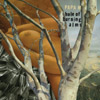 Drew Daniel of Matmos once said something to the effect of Dave Pajobeing one of those people whose musical and artistic talents are justbeyond comprehension, to the point that can make a number of peoplejealous. Pajo's guitar talents can be heard from releases stretchingback to the late 1980s with Slint (even earlier with more obscurebands' records that can probably not be located anywhere), continuingon into the 1990s with King Kong, Palace, Tortoise, and appearanceswith Stereolab, Royal Trux, and For Carnation live. In 1995, hereleased something as M, then M is the Thirteenth Letter, then AerialM, before settling on Papa M. It's important to note that recordingscollected here does not compile -the definitive singles collection- (itwould span more than three discs with today's technology), however, itdoes form a strong album of coherent material that can be listened topretty much within the catalogue of his first three releases throughDrag City: Aerial M, Post Global Music, and Live from a Shark Cage.In addition, it does sort of close the book on the musical style whichhas come to pass for him: the music is instrumental, and slowly, overtime, it evolves as Pajo gets more comfortable working with newelements of compositional style, instrumentation, and recordingtechnique. Opening with the first couple 7" singles, the group is avery basic guitar/bass/drums lineup. It's not until track five,"Mountains Have Ears," that Pajo begins to employ drum machines andcomputer recording techniques. While it gets more electronic, Pajocombats it with more traditional routes: following another mildlyelectronic piece "Vivea" is "Last Caress," a Misfits cover which isprobably the first release with Dave on the microphone. (This songwasn't the beginning of his vocal career as it wasn't until after thealbum Live from a Shark Cage that Pajo began to sing on nearly everything.) Some of the more obscure recordings include the 13+ minute Travels in Constantstrack, previously available only by subscription to the TemporaryResidence series and two Christmas singles only available to luckypeople on Drag City's mailing lists—one of them being the 16+ minutecover of "Turn, Turn, Turn," where the band (now more than just Dave)just planned to play until the four-track tape ran out. Speaking toPajo, there are considerations in releasing more singles collections inthe future, but, for now, for those who missed these things the firsttime around, your second chance to enjoy these awesome tunes hasarrived. The compilation is available now if you see him on tour and ina couple weeks if you can't get out or the tour comes nowhere near you.
Drew Daniel of Matmos once said something to the effect of Dave Pajobeing one of those people whose musical and artistic talents are justbeyond comprehension, to the point that can make a number of peoplejealous. Pajo's guitar talents can be heard from releases stretchingback to the late 1980s with Slint (even earlier with more obscurebands' records that can probably not be located anywhere), continuingon into the 1990s with King Kong, Palace, Tortoise, and appearanceswith Stereolab, Royal Trux, and For Carnation live. In 1995, hereleased something as M, then M is the Thirteenth Letter, then AerialM, before settling on Papa M. It's important to note that recordingscollected here does not compile -the definitive singles collection- (itwould span more than three discs with today's technology), however, itdoes form a strong album of coherent material that can be listened topretty much within the catalogue of his first three releases throughDrag City: Aerial M, Post Global Music, and Live from a Shark Cage.In addition, it does sort of close the book on the musical style whichhas come to pass for him: the music is instrumental, and slowly, overtime, it evolves as Pajo gets more comfortable working with newelements of compositional style, instrumentation, and recordingtechnique. Opening with the first couple 7" singles, the group is avery basic guitar/bass/drums lineup. It's not until track five,"Mountains Have Ears," that Pajo begins to employ drum machines andcomputer recording techniques. While it gets more electronic, Pajocombats it with more traditional routes: following another mildlyelectronic piece "Vivea" is "Last Caress," a Misfits cover which isprobably the first release with Dave on the microphone. (This songwasn't the beginning of his vocal career as it wasn't until after thealbum Live from a Shark Cage that Pajo began to sing on nearly everything.) Some of the more obscure recordings include the 13+ minute Travels in Constantstrack, previously available only by subscription to the TemporaryResidence series and two Christmas singles only available to luckypeople on Drag City's mailing lists—one of them being the 16+ minutecover of "Turn, Turn, Turn," where the band (now more than just Dave)just planned to play until the four-track tape ran out. Speaking toPajo, there are considerations in releasing more singles collections inthe future, but, for now, for those who missed these things the firsttime around, your second chance to enjoy these awesome tunes hasarrived. The compilation is available now if you see him on tour and ina couple weeks if you can't get out or the tour comes nowhere near you. Esmerine are being called a gy!be off-shoot as the core members — BruceCawdron and Beckie Foon #151; have played on various releases relatedto the Montreal collective. At the same time that the label gets them acertain amount of attention, I think it belittles the power of theirmusic at the same time, as this is not just a plaything to occupy sometime while the members wait for a new gy!be or Silver Mt. Zion record.Through very simple means, Esmerine have concocted one of the mostmoving records I've heard, mostly using simple percussion and cellowith some guest musicians to round out some of the compositions. First,there is beauty in the music itself, as the cello has the ability toextract tears from even the staunchest individual. Next, the perussionis mostly marimba or light drumming, which keeps a nice pace, but alsocuts the more overbearing moments of the strings with a slightlylighter tone. Mostly, though, the compositions themselves arebreathtaking, with moments of pure heartrending glory. There aremoments of bombast that hint at some heavy firepower, but Esmerinemostly lock it away; like offering a glance at the weapon, knowingthere's a larger psychological impact than brandishing it every fiveminutes. "Red Fire Alarm" starts off quiet, then builds to a boisteroustete-a-tete between all instruments. Eventually, the song lies down fora nap, slowly fading off into a deep sleep. The epic journey of thesecond track may turn some off, but the interplay of the strings withthe very quiet drone behind them is quite stirring. Elsewhere, there isthe lighter feel of "Tungsten" and the experimentation of "Luna Park"and "The Marvellous Engines of Resistance" to offer a smattering ofstyles with equally pleasing results. As the album finally nears itsend, the true demons finally come out, and it's worth every measure. Asound debut, and much more than some of the buzz words make it out tobe.
Esmerine are being called a gy!be off-shoot as the core members — BruceCawdron and Beckie Foon #151; have played on various releases relatedto the Montreal collective. At the same time that the label gets them acertain amount of attention, I think it belittles the power of theirmusic at the same time, as this is not just a plaything to occupy sometime while the members wait for a new gy!be or Silver Mt. Zion record.Through very simple means, Esmerine have concocted one of the mostmoving records I've heard, mostly using simple percussion and cellowith some guest musicians to round out some of the compositions. First,there is beauty in the music itself, as the cello has the ability toextract tears from even the staunchest individual. Next, the perussionis mostly marimba or light drumming, which keeps a nice pace, but alsocuts the more overbearing moments of the strings with a slightlylighter tone. Mostly, though, the compositions themselves arebreathtaking, with moments of pure heartrending glory. There aremoments of bombast that hint at some heavy firepower, but Esmerinemostly lock it away; like offering a glance at the weapon, knowingthere's a larger psychological impact than brandishing it every fiveminutes. "Red Fire Alarm" starts off quiet, then builds to a boisteroustete-a-tete between all instruments. Eventually, the song lies down fora nap, slowly fading off into a deep sleep. The epic journey of thesecond track may turn some off, but the interplay of the strings withthe very quiet drone behind them is quite stirring. Elsewhere, there isthe lighter feel of "Tungsten" and the experimentation of "Luna Park"and "The Marvellous Engines of Resistance" to offer a smattering ofstyles with equally pleasing results. As the album finally nears itsend, the true demons finally come out, and it's worth every measure. Asound debut, and much more than some of the buzz words make it out tobe. 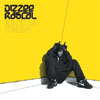 Finally, after a year and a half, the mercury prize for album of theyear, a stabbing, and endless amounts of hype-slipping across theAtlantic Ocean about a true slice of the U.K. Garage scene (unlike theamusing, but hardly definitive Original Pirate Material)landing stateside and demolishing the anemic backpacker underground,Dizzee Rascal has arrived. While it's difficult to say that anythinglavished with so much unyielding praise could ever live it down, Boy in Da Cornerdoes quite a bit to support it. It is a brilliant collection of bangersthat can be at times furious and frothing, and other times insightfuland contemplative. Rascal doesn't' fall prey to the run of the mill hiphop clich?, giving issues like violence and sexuality their due with amore sensitive eye than most. When others fall prey toself-contradiction and self-involvement, Dizzee finds a consistency andbalance, a sense of control-not bottled or volatile but reigned in,precise and deftly employed. His tracks are punctuated with off kilter,upside down beats that sound like they're coming from water damageddrum machines and synthesizers. They fall on top of each other in afilthy collision of thin, piercing claps of metallic shards and wobblynotes with a thick and heavy low end. The thick East London accent thatdominates his delivery decimates the sleepy flow of mainstream rapperslike 18 Cent as well as the squeaky bleats of American undergroundcounterparts like Aesop Rock. Rascal doesn't cop out and slack on hisbeats for the sake of his lyrics or mumble his way through his tracksto show off his production. His voice is ingrained in the music, asaggressive an instrument as the concussive pipe bomb percussion thatpropels him. "Stop Dat" is a knives-out assault, spitting lyrics acrossan adrenaline-fueled crush of ominous clashes and crunches. Everyslit-eyed glance and sized up plot comes across in his venomous accent."I Luv U" pairs Dizzee with the clearly annoyed vocals of JeanneJacques, trading chorus lines Positive K style over throbbing IDMbeats, and shows that Mike Skinner wasn't exactly telling the truthwhen he said "round 'ere we call 'em birds / not bitches." Along with"Jezebel," this track explores the male female interaction with askeptical and critical eye, lampooning careless sex andirresponsibility while bemoaning the devastating (and cyclical) resultsof teenage promiscuity. "Do It" is a sincere, contemplative piece whereDizzee reveals himself, going deeply into personal insecurity, fearsand doubts and closing with the decidedly upbeat notion that "you cando anything." Boy in the Corner is a devastating salvo thatwill leave Rascal's contemporaries (particularly those in the UnitedStates) shell shocked and dazed. This record will sit at the head ofthe pack and give everyone a target to aim for, whether it is toemulate it's successful formula or kill it with something even moreforward looking and fresh. Hopefully his example will provoke otherhip-hop, rap, garage, grime innovators to come forth and show whatthey've got, and serve as a warning to all those who are alreadystagnant that it's time to fix up and look sharp.
Finally, after a year and a half, the mercury prize for album of theyear, a stabbing, and endless amounts of hype-slipping across theAtlantic Ocean about a true slice of the U.K. Garage scene (unlike theamusing, but hardly definitive Original Pirate Material)landing stateside and demolishing the anemic backpacker underground,Dizzee Rascal has arrived. While it's difficult to say that anythinglavished with so much unyielding praise could ever live it down, Boy in Da Cornerdoes quite a bit to support it. It is a brilliant collection of bangersthat can be at times furious and frothing, and other times insightfuland contemplative. Rascal doesn't' fall prey to the run of the mill hiphop clich?, giving issues like violence and sexuality their due with amore sensitive eye than most. When others fall prey toself-contradiction and self-involvement, Dizzee finds a consistency andbalance, a sense of control-not bottled or volatile but reigned in,precise and deftly employed. His tracks are punctuated with off kilter,upside down beats that sound like they're coming from water damageddrum machines and synthesizers. They fall on top of each other in afilthy collision of thin, piercing claps of metallic shards and wobblynotes with a thick and heavy low end. The thick East London accent thatdominates his delivery decimates the sleepy flow of mainstream rapperslike 18 Cent as well as the squeaky bleats of American undergroundcounterparts like Aesop Rock. Rascal doesn't cop out and slack on hisbeats for the sake of his lyrics or mumble his way through his tracksto show off his production. His voice is ingrained in the music, asaggressive an instrument as the concussive pipe bomb percussion thatpropels him. "Stop Dat" is a knives-out assault, spitting lyrics acrossan adrenaline-fueled crush of ominous clashes and crunches. Everyslit-eyed glance and sized up plot comes across in his venomous accent."I Luv U" pairs Dizzee with the clearly annoyed vocals of JeanneJacques, trading chorus lines Positive K style over throbbing IDMbeats, and shows that Mike Skinner wasn't exactly telling the truthwhen he said "round 'ere we call 'em birds / not bitches." Along with"Jezebel," this track explores the male female interaction with askeptical and critical eye, lampooning careless sex andirresponsibility while bemoaning the devastating (and cyclical) resultsof teenage promiscuity. "Do It" is a sincere, contemplative piece whereDizzee reveals himself, going deeply into personal insecurity, fearsand doubts and closing with the decidedly upbeat notion that "you cando anything." Boy in the Corner is a devastating salvo thatwill leave Rascal's contemporaries (particularly those in the UnitedStates) shell shocked and dazed. This record will sit at the head ofthe pack and give everyone a target to aim for, whether it is toemulate it's successful formula or kill it with something even moreforward looking and fresh. Hopefully his example will provoke otherhip-hop, rap, garage, grime innovators to come forth and show whatthey've got, and serve as a warning to all those who are alreadystagnant that it's time to fix up and look sharp. 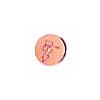 Yeah is one of two new platters of tasty wax from DFA Records, certainly the most name-checked label since anyone gave a shit about Warp Records. James Murphy's LCD Soundsystem hasn't released a new 12" single since 2002's "Losing My Edge," even though private edition tracks like "Tribulations" and "Where Is Love?" have been popping up on file-sharing services over the past year. Rather than officially releasing one of the aforementioned tracks, Murphy's Soundsystem has crafted a new track aimed straight at clubs: a massive, obnoxious punk-disco meltdown destined to be the set-closing favorite of DJs everywhere in coming months.
Yeah is one of two new platters of tasty wax from DFA Records, certainly the most name-checked label since anyone gave a shit about Warp Records. James Murphy's LCD Soundsystem hasn't released a new 12" single since 2002's "Losing My Edge," even though private edition tracks like "Tribulations" and "Where Is Love?" have been popping up on file-sharing services over the past year. Rather than officially releasing one of the aforementioned tracks, Murphy's Soundsystem has crafted a new track aimed straight at clubs: a massive, obnoxious punk-disco meltdown destined to be the set-closing favorite of DJs everywhere in coming months.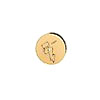
 Robin Saville and Antony Ryan return with their fourth album (and thirdfor Morr) since their inception in 1996. In keeping with their previouswork, Meet Next Lifecombines warm textures with cool soundscapes to create a thoroughlybalanced album of lush, often touching instrumental melodies that arenever overwrought. While their last record, Lucky Cat wasslightly more minimal, their latest finds the band carefully expandingtheir horizons, particularly in terms of diversity. The first track,"Birds Over Barges," brings crystalline acoustic guitar to the mix,adding a gauzy dimension to the sounds of the analogue synths. Fromthere, the songs slide and drift languidly into one another, andalthough the overall sound of the album is subtle and understated, ISANmanages to avoid lapsing into monotony. "One Man Abandon" and"Snowdrops and Phlox" are winsome lullabies, while "The Race To BeFirst Home" is winsomely playful with its jubilant xylophone sounds.The haunting title track, which brings Meet Next Life to a close, is strongly reminiscent of Brian Eno's Apollo.The best of the bunch, "Gunnera," amazingly brings all these elementstogether in what is definitely the signature piece of the album. I findit apt that ISAN chose black and white butterflies to adorn the coverof Meet Next Life as it speaks volumes about their gossamer simplicity. It is a record that is as elegant as it is modest.
Robin Saville and Antony Ryan return with their fourth album (and thirdfor Morr) since their inception in 1996. In keeping with their previouswork, Meet Next Lifecombines warm textures with cool soundscapes to create a thoroughlybalanced album of lush, often touching instrumental melodies that arenever overwrought. While their last record, Lucky Cat wasslightly more minimal, their latest finds the band carefully expandingtheir horizons, particularly in terms of diversity. The first track,"Birds Over Barges," brings crystalline acoustic guitar to the mix,adding a gauzy dimension to the sounds of the analogue synths. Fromthere, the songs slide and drift languidly into one another, andalthough the overall sound of the album is subtle and understated, ISANmanages to avoid lapsing into monotony. "One Man Abandon" and"Snowdrops and Phlox" are winsome lullabies, while "The Race To BeFirst Home" is winsomely playful with its jubilant xylophone sounds.The haunting title track, which brings Meet Next Life to a close, is strongly reminiscent of Brian Eno's Apollo.The best of the bunch, "Gunnera," amazingly brings all these elementstogether in what is definitely the signature piece of the album. I findit apt that ISAN chose black and white butterflies to adorn the coverof Meet Next Life as it speaks volumes about their gossamer simplicity. It is a record that is as elegant as it is modest.